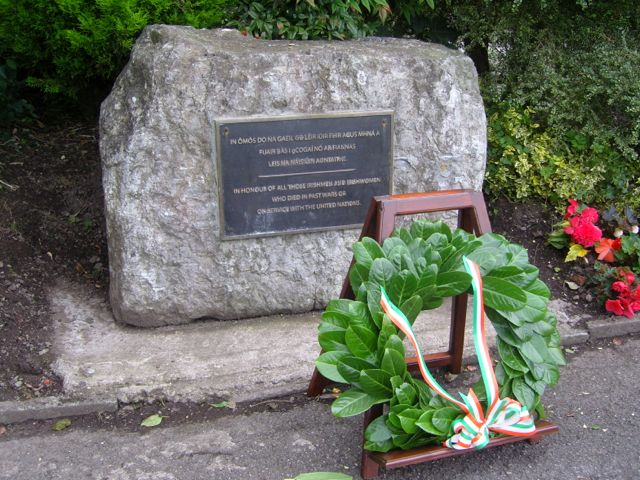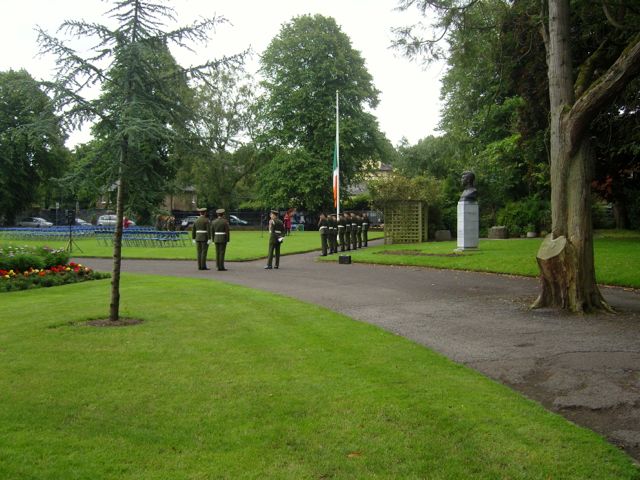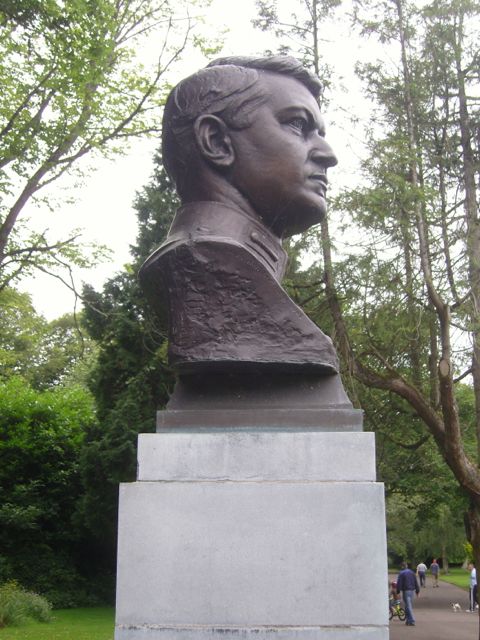After a summer hiatus, the blog is back!
First item on the (very long) ‘to do list’ is to comment on the National Day of Commemoration held on Sunday 8 July, marked by ceremonies in Dublin, Cork, Waterford, Kilkenny, Sligo, Galway and Limerick. The National Day of Commemoration is to remember all Irishmen and Irishwomen who died in war or on service with the United Nations. This is a frankly bizarre pairing of two different groups: the first, anyone Irish who died in any war, anywhere and the second, soldiers of Ireland (the twenty-six county republic) who died while wearing the blue beret of the United Nations.

The Dublin ceremony was attended by the President, the Taoiseach, the Attorney General, members of the Cabinet, Chief of Staff of the Defence Forces, senior diplomats and over a thousand guests, according to RTE. 1
In the RTE news report broadcast that night, it was claimed ‘hundreds’ attended the Cork event in Fitzgerald’s Park. 2 But I was there, and there were barely 50 people participating in total. True, people with buggies paused to watch but they kept their distance. The army presence was very low key, with a small, unimpressive guard of honor.

It was a lacklustre, underwhelming affair, particularly when compared with the Dublin ceremony, which was held in the imposing courtyard of Ireland’s oldest purpose-built barracks, the former Royal Barracks. Two army bands and a civilian choir provided excellent musical interludes, while in Cork we listened to a lone soprano almost forget the words of the national anthem. The political heavyweights were conspicuous by their absence: where was Micheal Martin, Cork TD and leader of Fianna Fail? Jerry Buttimer TD, a member of Fine Gael, attended but the Cork Fine Gael minister, Simon Coveney, was not there to represent the government.
In Dublin, the representatives of the faith communities were high-status, high-ranking individuals, with the Archbishop of Dublin, Diarmaid Martin representing the Catholic Church. The Bishop of Cork sent a friar from a city-centre church, probably a Franciscan. And there was no cleric from the Muslim community in Cork, though it must be significantly larger than the Jewish community, who were represented.
The contrast between the formal, solemn, weighty ceremony in Dublin and the half-hearted, almost embarrassed effort in Cork was stark. With the Dublin ceremony, the government demonstrates to the diplomatic corps (especially the British ambassador) that the Irish state is now inclusive, ready to acknowledge uncomfortable truths about the history of Irishmen and women in the British, imperial army and open to all ‘traditions’ on the island, to quote the language of the Northern Irish peace process.
In Cork, senior politicians and clerics scorn the ceremony, either because they fear reactionaries in their own fold, or because they themselves are not interested in acknowledging the Irish military tradition, in all its confusing diversity.
The yawning chasm between the regional and central ceremonies can be expressed in one phrase: fur coat, no knickers.

- http://www.rte.ie/news/2012/0708/national-day-of-commemoration.html Accessed 3 September 2012. ↩
- http://www.rte.ie/news/av/2012/0708/media-3338836.html Accessed 3 September 2012. ↩